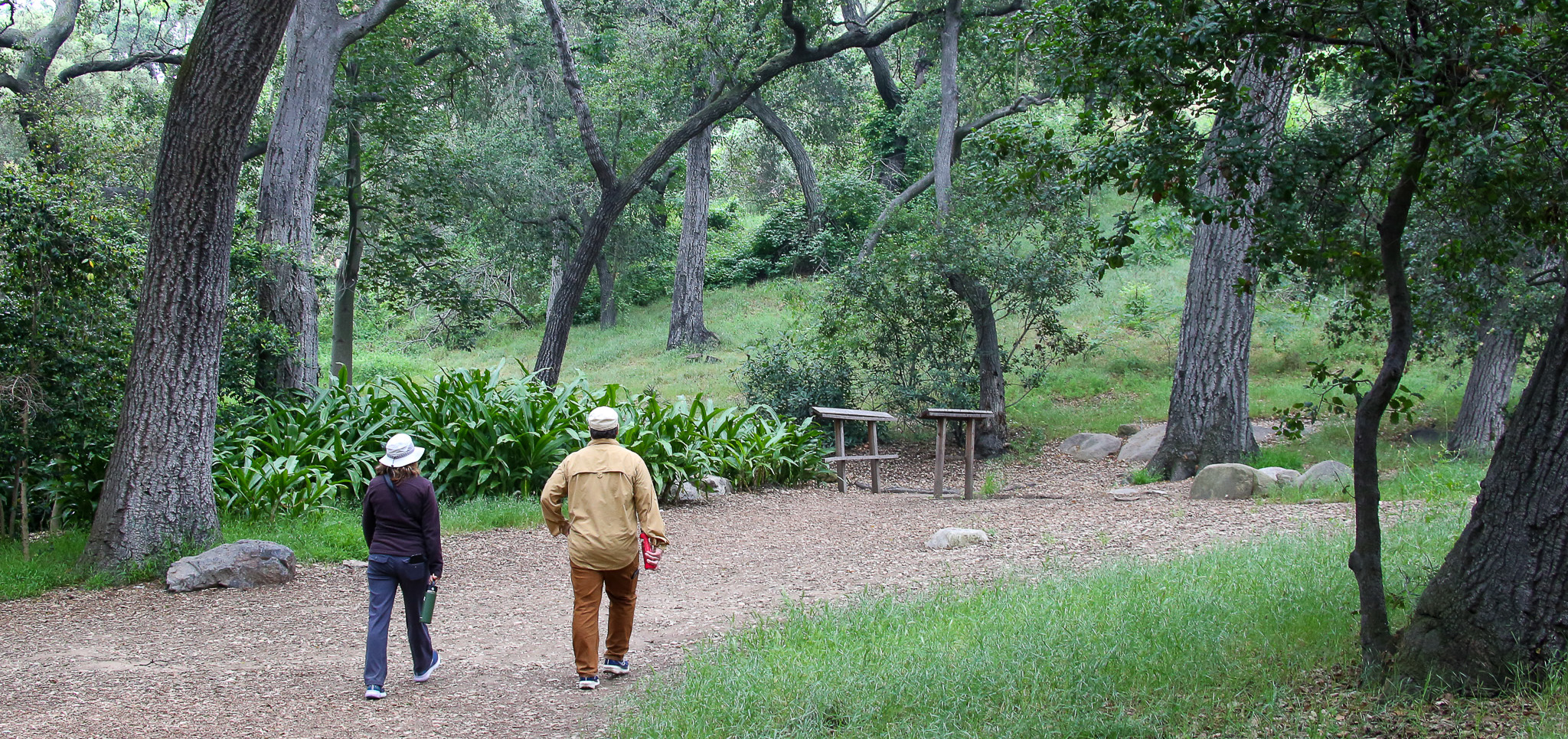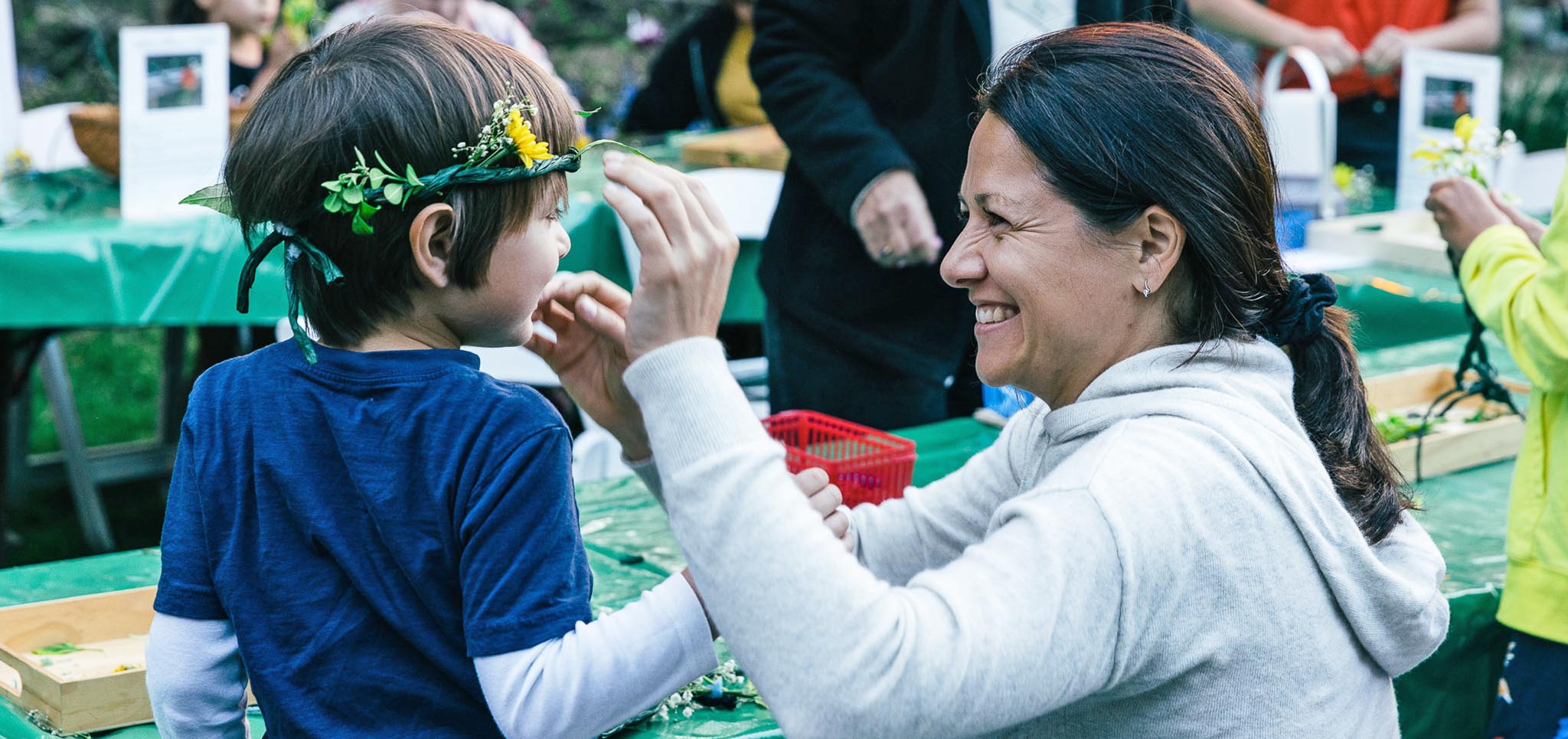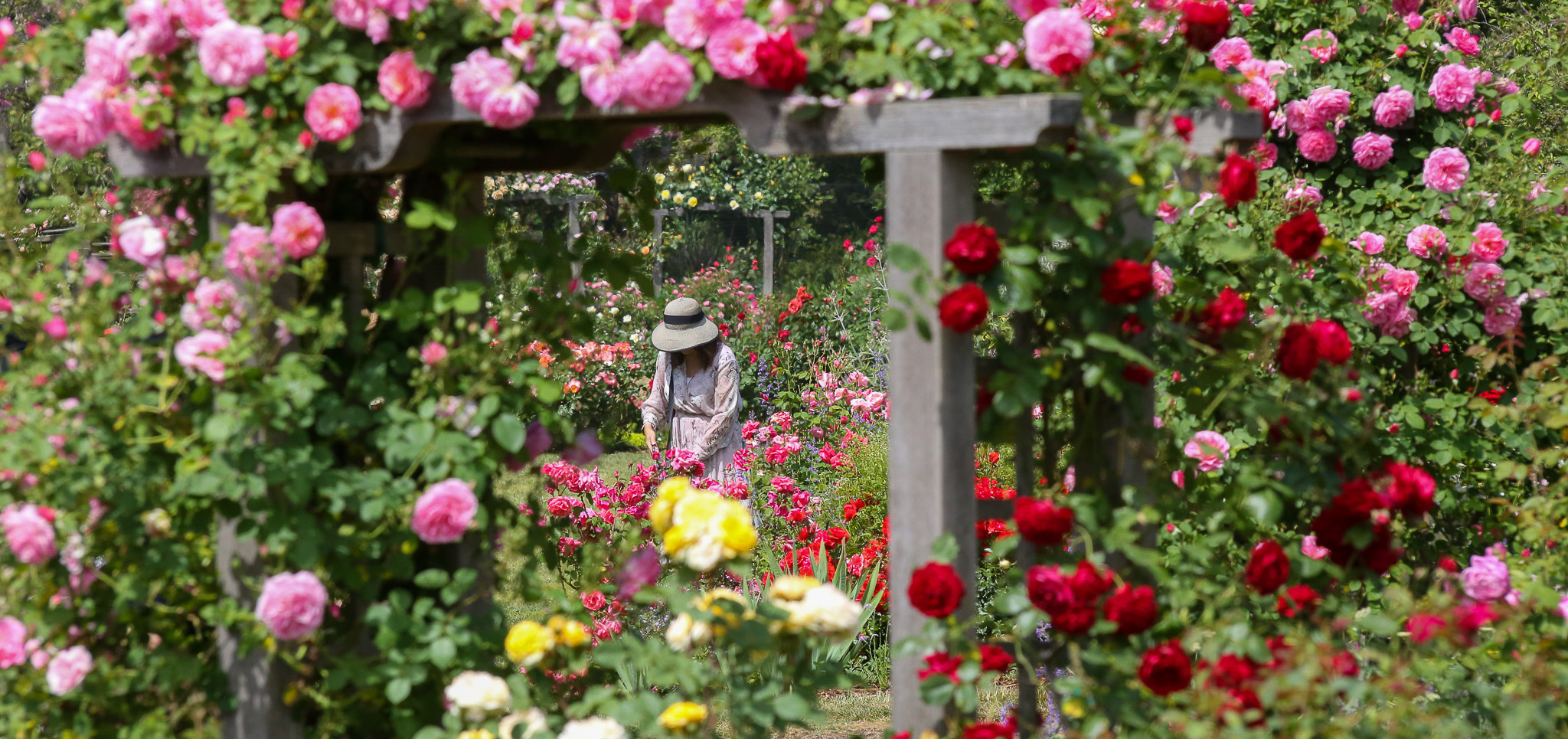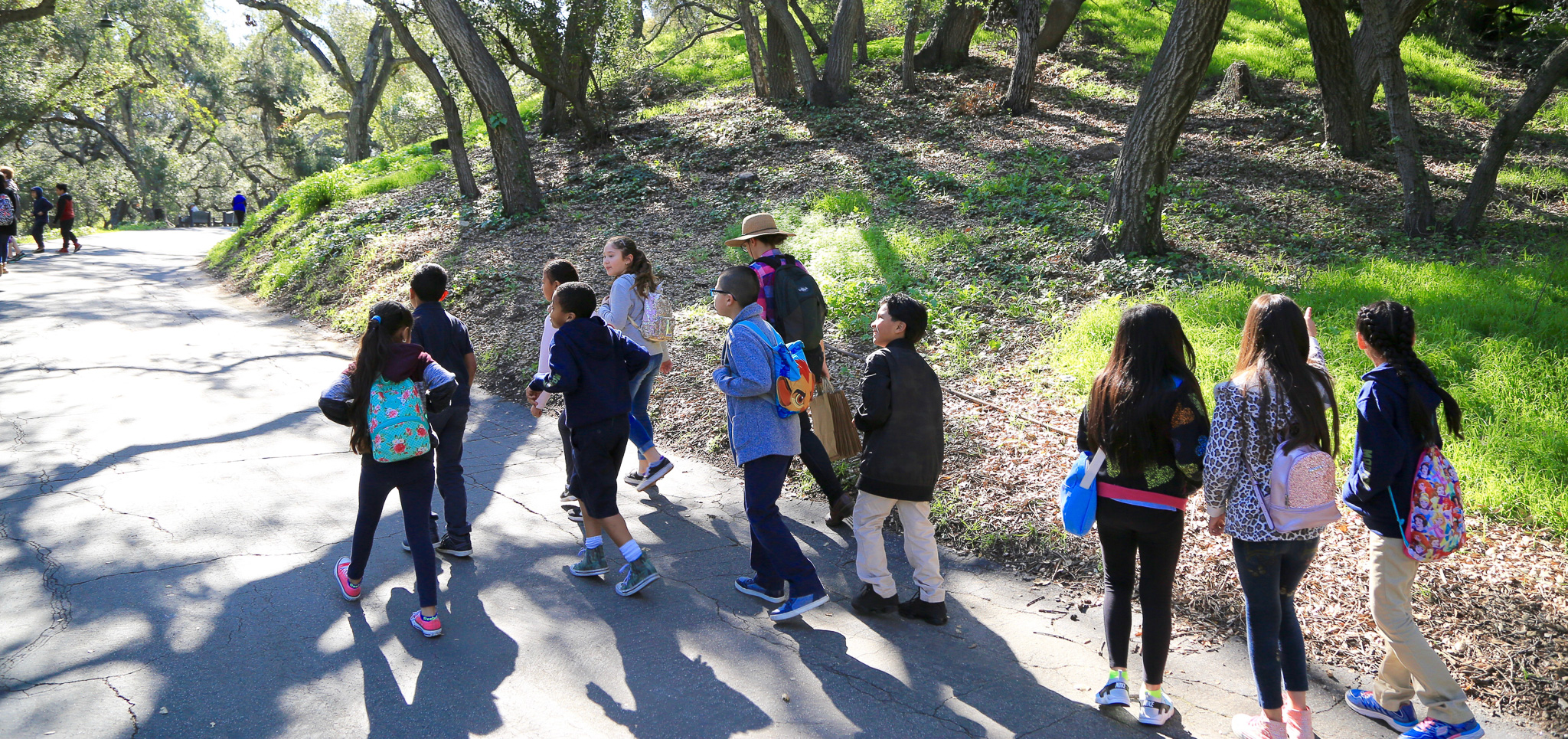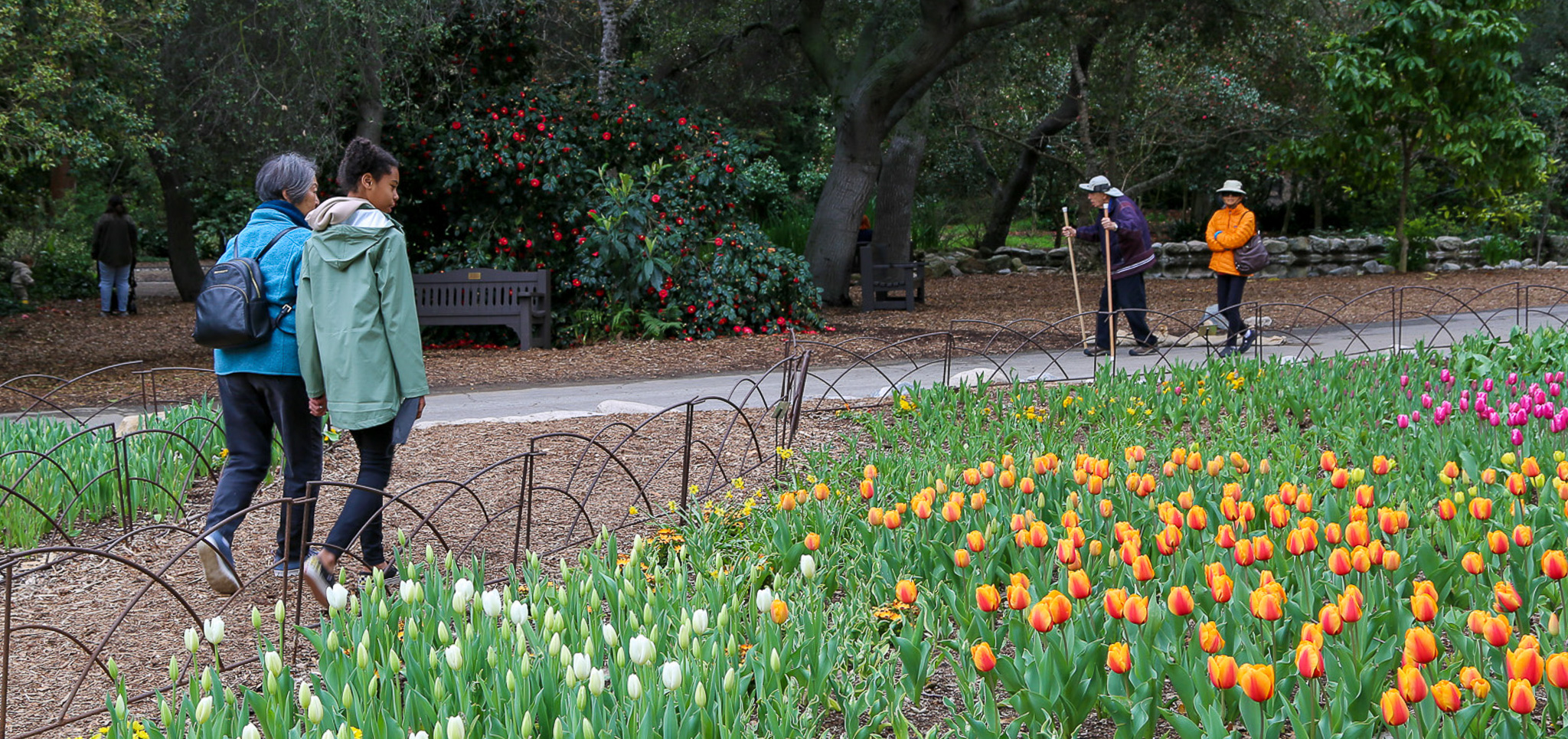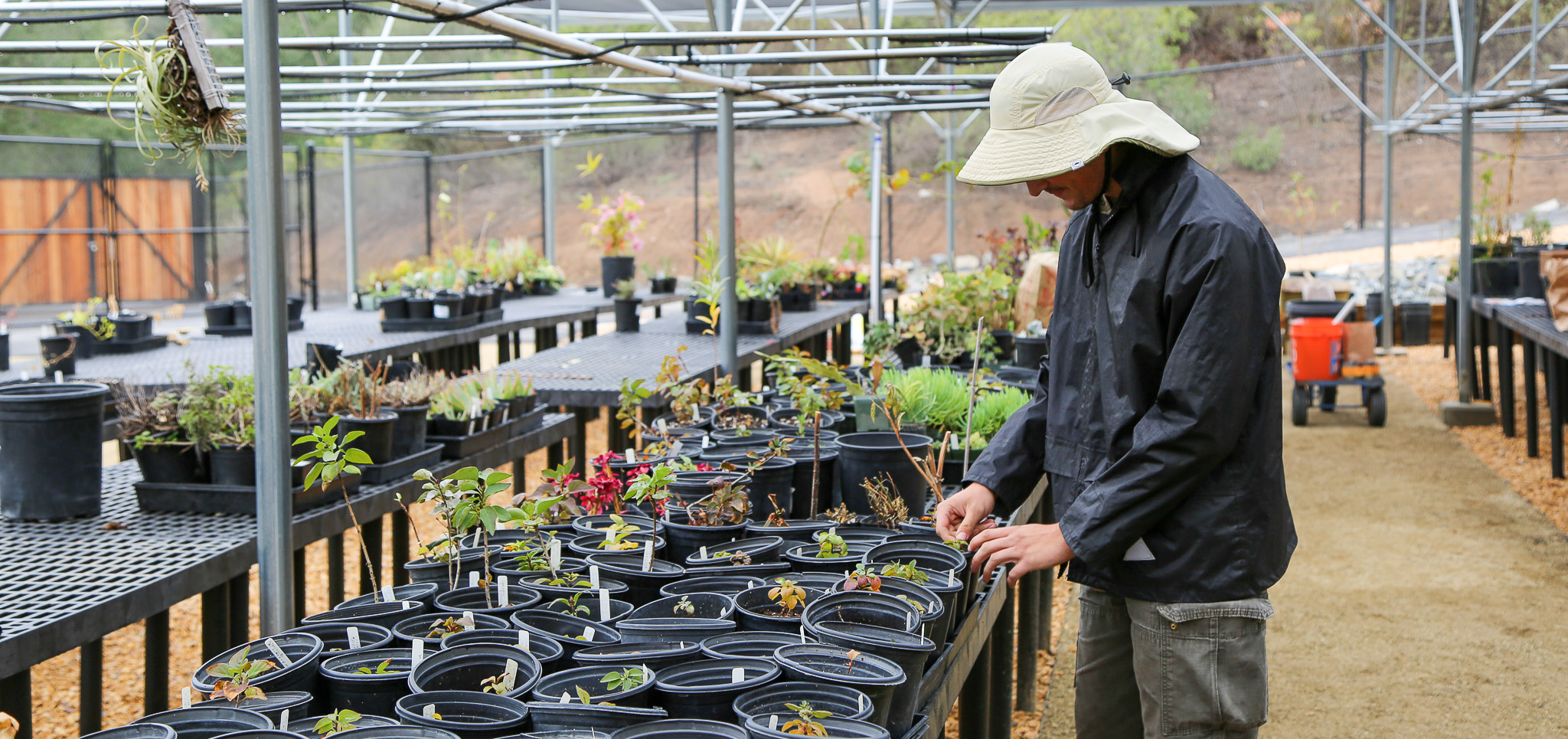At Descanso Gardens we connect people with nature and one another
The new Descanso logo
Our new logo depicts the ongoing growth and botanical spirit of the gardens. With cultivated gardens and nearly wild, natural landscapes, discovery is always in season at Descanso.
Thousands of years in the making
Descanso Gardens is a story of plants and the people who loved them for their life-giving utility and their great natural beauty. While the tale unfolds over centuries, the connecting thread—from the indigenous people who relied on the plentiful oaks for food and their way of life to the 20th-century entrepreneur who sowed the seeds of a cultural institution—is a deep-seated love for this evocative and distinctive place.
Descanso’s evolution into a botanic garden, open to the public and nationally accredited as a “museum of living collections,” is the most recent chapter in the rich history of this landscape. Descanso Gardens remains an oasis of beauty, both rugged and refined. In its eloquent landscapes, vignettes, and vistas we can experience firsthand moments in the epic story of humans’ relationships with the natural world and enjoy a refuge of stunning beauty.
Descanso's history
The Tongva: 10,000 years ago
The Tongva people settled in Southern California and made their homes in nearly all of what is present-day L.A. County. To this day, the Tongva have a reciprocal relationship with the Earth, pledging to care for all of nature, and treating plants, animals, and humans with respect.
Learn more about the Tongva and their connection to our coast live oaks.
1542: Spanish Colonial California
Juan Rodriguez Cabrillo’s Pacific expedition brought the Spanish to Southern California. Around the time the Revolution was escalating on America’s East Coast, Spain began to assert its hold on California by establishing a chain of missions and military outposts that connected 500 miles of California, from San Diego to Sonoma.
The California mission system took away the freedom and culture of the native people. A feudal system of land grants and ownership emerged to take away the land.
1840s: War and gold
Mexico and the United States went to war in 1846 over past disagreements and the future of California. Eighteen months later, the Treaty of Guadalupe Hidalgo settled things: The land that would become California, New Mexico, Utah, and Colorado would now be United States territory.
A year later, in 1849, gold was discovered in the Sierra, triggering a rush of settlement, commerce, and resource exploitation unique in American history.
1850s: Land title disarray keeps Descanso together
The following year, in 1850, California rushed into statehood. In the wake of these tumultuous events, the land that encompassed Descanso Gardens entered a period of contested ownership, a succession of owners, division, questions of title, and confusion. This ultimately may have proven beneficial: It kept the land now known as Descanso Gardens in one piece.
1930s: Descanso established
In the late 1930s, Elias Manchester Boddy bought 165 acres of undeveloped land (now Descanso) for a ranch and a new home, designed by “architect to the stars” James E. Dolena.
1940s: Descanso’s Camellia Collection
To tend to his growing camellia collection, Boddy hired noted horticulturist Howard Asper. He also became acquainted with successful Japanese immigrant growers, F.M. Uyematsu of Star Nursery and Fred and Mitoko Yoshimura of Mission Nursery, who were cultivating camellias in Southern California before World War II.
Japanese-American camellia growers and WWII
On Feb. 19, 1942, U.S. President Franklin D. Roosevelt signed Executive Order 9066, which led to the mass incarceration of Japanese Americans on U.S. soil during World War II. Both Uyematsu and the Yoshimuras were forced to sell their camellia plants, and the Yoshimuras sold their entire San Gabriel nursery to Boddy before being sent to detention camps.
The purchase of their plant inventories became the basis for Descanso Gardens’ first signature Camellia Collection.
1950s: Private estate to public garden
The post-war housing boom brought many newcomers to the neighborhood, some of whom were unhappy to find a commercial enterprise in their midst. To ease public curiosity, Boddy opened his estate to the public. Almost 6,000 people flocked to Descanso, which alarmed neighbors.
In 1952, Boddy retired, sold his ranch and moved to San Diego County. Concerned by the prospect of development (as well as a whiff of interest from Walt Disney who eyed Descanso as a potential site for Disneyland), neighbors approached the Los Angeles County Board of Supervisors with the idea that the county purchase the property, to keep the land intact and in the public trust.
Although the supervisors were divided, the majority prevailed and Descanso Gardens was converted from a private estate to a public garden in 1953.
1950s-1980s: Threats to the fledgling botanic garden
In spite of its new status as a county facility, Descanso continued to face threats. Attendance was disappointing, the Gardens needed maintenance, and some thought the land should be turned into a dump!
In 1957, a handful of Descanso’s neighbors organized the Descanso Gardens Guild, an all-volunteer support group, to provide direction and funding for the fledgling botanic garden. Under The Guild’s guidance, renowned botanist Theodore Payne designed and installed the California Natives Garden in 1959.
In 1966, the Japanese Garden opened. The garden was designed by Eijiro Nunokawa, created by Frank Kuwahara, and built with all-volunteer labor and funding provided by the Japanese-American community. The Teahouse was designed by San Marino architect Whitney Smith. A Japanese country-style farmhouse (called a Minka) was added in 1969 by Bob and Mary Matsumoto.
In 1982, the new entrance buildings were completed, including Guest Services, Courtyard, Van de Kamp Hall, classrooms, and café.
1990s: Growth of The Guild and a new rose garden
In the 1990s, The Guild grew in size, influence, and ambition. In 1993, it signed a contract with L.A. County which made the Guild responsible for managing Descanso Gardens. A new rose garden, the 5-acre International Rosarium, opened in 1994.
2000s: Museum accreditation and multiple restorations
In 2004, Descanso Gardens earned museum accreditation from the American Alliance of Museums. We are truly a museum of living collections.
The Boddy House was restored in 2007 with a grant from the Ahmanson Foundation that enabled the Guild to repurpose the house as a combination house-museum and interpretive center for visitors.
The Sturt Haaga Gallery opened in 2011, thanks to a lead gift from Heather and Paul Haaga. The Gallery reimagined and renovated the Boddy House garage.
In November 2014, the Oak Woodland opened — Descanso Gardens’ first expansion in over 30 years.
In September 2015, Descanso opened another new garden, the Ancient Forest, a collection of cycads sited amid other plants of ancient, “living fossil” lineages.
Today: Ongoing transformation and sustainability
Descanso continues to be an accredited museum and welcomes almost 1 million people to the gardens each year. Adjustments are ongoing as the Gardens continue to be transformed by the changing climate and growing visitor interest.
The Guild, renamed the Descanso Gardens Foundation, now looks to the future. In 2020, L.A. County approved a Master Plan for Descanso that includes additions to the garden with an eye toward sustainability and water conservation.
Descanso Gardens Land Acknowledgment
Descanso Gardens strongly believes that a Land Acknowledgment should be the result of relationship-building with the thriving and vibrant Native American communities in the Southern California area. We are committed to building this relationship. A Land Acknowledgment is a formal statement that recognizes Native Americans as the original stewards of the land our living museum is on today.
On November 1, 2022, L.A. County adopted a formal Land Acknowledgment. The following statement will be used at Descanso Gardens:
The County of Los Angeles recognizes that we occupy Land originally and still inhabited and cared for by the Tongva, Tataviam, Serrano, Kizh, and Chumash Peoples. We honor and pay respect to their elders and descendants — past, present, and emerging as they continue their stewardship of these Lands and waters. We acknowledge that settler colonization resulted in Land seizure, disease, subjugation, slavery, relocation, broken promises, genocide, and multigenerational trauma. This Acknowledgment demonstrates our responsibility and commitment to truth, healing, and reconciliation and to elevating the stories, culture, and community of the original inhabitants of Los Angeles County. We are grateful to have the opportunity to live and work on these ancestral Lands. We are dedicated to growing and sustaining relationships with Native peoples and local tribal governments, including (in no particular order) the following:
- Fernandeño Tataviam Band of Mission Indians
- Gabrielino Tongva Indians of California Tribal Council
- Gabrieleno/Tongva San Gabriel Band of Mission Indians
- Gabrieleño Band of Mission Indians – Kizh Nation
- San Manuel Band of Mission Indians
Land Acknowledgment FAQs
What is a Land Acknowledgment?
A Land Acknowledgment is a formal statement that recognizes Indigenous Peoples as traditional stewards of the land that Descanso sits on and the enduring relationship that exists between Indigenous Peoples and their traditional territories.
Why do we recognize the land?
To recognize the land is an expression of gratitude and appreciation to those whose land you reside on and to seek to understand your place within that history.
Do other institutions have Land Acknowledgments?
Los Angeles County already has a Land Acknowledgment as does almost every other cultural institution in Southern California.
